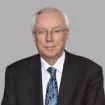The USPTO 101 Guidance document has been under a cloud when Judge Brinkema refused to follow the guidance in Cleveland Clinic Found. V. True Health Diagnostics LLC., affirmed at 760 F. App'x. 1013, 1020 (Fed. Cir. 2019). In Cleveland Clinic relied on Guidance example 29, claim 1 to assert that its claims were patent eligible since they were drafted in the same manner. The Federal Circuit in rejecting the argument found the 101 Guidance example 29, claim 1 to be “strikingly” similar to claim 1, see760 F. App'x. at 1020, which the Federal Circuit held was patent ineligible. The guidance teaches that example 29, claim 1 is patent eligible. The USPTO has not responded to the Court's criticism and example 29 continues to appear in the Guidance unchanged. While Cleveland Clinic was an infringement case, the Federal Circuit found in February 2020 that it was improper for the PTAB to rely on the Guidance holding that it's the Federal Circuit and Supreme Court case law which must control, In re Rudy, 956 F.3d 1379, 1383, (Fed. Cir. 2020). The PTAB decision was affirmed by the Court applying its and Supreme Court precedent. In February 2021 the Court reiterated its rejection of the Guidance in affirming the PTAB under court precedent rejecting the PTAB's reliance on the Guidance in an appeal from a covered business method challenge, Cxloyalty, Inc. v. Maritz Holdings, Inc., 986 F.3d 1367, 1381, fn. 1 (Fed. Cir 2021).
To date the USPTO has not modified its Guidance to reflect the Court's criticism and example 29 still appears the examples provided in the MPEP. This leaves the USPTO in ex parte prosecution applying its discredited Guidance and that one can obtain a claim from the USPTO which will not withstand scrutiny in an enforcement action as happened in Cleveland Clinic. What is a patent prosecutor to do?
First, one must draft claims following the Federal Circuit and Supreme Court case law. The good news is that a claim passes muster under current case law will comply with the Guidance. In arguing for patent eligibility don't simply rely on the Guidance. One should argue for patent eligibility under both the Guidance and the case law separately. The PTAB in Rudy and Cxloyalty was affirmed because it conducted an independent analysis under both the Guidance and case law. Second, in drafting claims do not use the Guidance examples as a template unless they are drawn directly from Federal Circuit or Supreme Court cases where the example claim was found to be patent eligible.
Perhaps one day the USPTO and the Federal Circuit will get on the same page with patent eligibility but until then we are subject to two masters.
The content of this article is intended to provide a general guide to the subject matter. Specialist advice should be sought about your specific circumstances.


